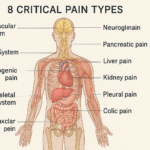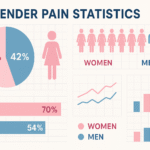Building muscle isn’t just about what happens in the gym—it’s equally about what you do afterward. Your muscle recovery plan determines whether your hard work translates into real gains or leaves you stuck in a cycle of fatigue and plateaus. Understanding how to optimize your post-workout recovery is the key to unlocking consistent muscle growth, preventing injury, and maintaining long-term fitness progress.
Immediate Post-Workout Recovery Strategies
The first few hours after your workout are critical for setting the stage for optimal muscle recovery. Your body is primed to absorb nutrients, begin repair processes, and start adapting to the stress you’ve just placed on it.
Don’t Skip the Cool-Down and Stretching
Many people rush out of the gym immediately after their last set, but this is a missed opportunity for recovery enhancement. A proper cool-down helps your heart rate gradually return to baseline while promoting blood flow to working muscles.
Spend 5-10 minutes doing light cardio followed by static stretching of the muscle groups you’ve trained. This helps:
- Reduce muscle stiffness and soreness
- Improve flexibility and range of motion
- Promote blood circulation for nutrient delivery
- Begin the mental transition from workout to recovery mode
Hydration: Your Recovery Foundation
Dehydration can significantly impair muscle recovery and protein synthesis. During exercise, you lose not just water but essential electrolytes that support muscle function and recovery.
Immediate hydration goals:
- Drink 16-24 ounces of water within 30 minutes post-workout
- Include electrolyte-rich beverages if you’ve sweated heavily
- Monitor urine color—pale yellow indicates proper hydration
The Post-Workout Protein Window
While the “anabolic window” isn’t as narrow as once believed, consuming protein within 2 hours post-workout still offers benefits for muscle recovery and growth. Aim for 20-40 grams of high-quality protein to:
- Stimulate muscle protein synthesis
- Provide amino acids for muscle repair
- Reduce muscle protein breakdown
Best post-workout protein sources:
- Whey protein powder (fast-absorbing)
- Greek yogurt with berries
- Chocolate milk
- Lean chicken or fish
- Eggs
Carbohydrate Replenishment for Recovery
Don’t neglect carbohydrates in your recovery nutrition. They serve multiple critical functions:
- Replenish muscle glycogen stores
- Support protein synthesis
- Reduce cortisol levels
- Provide energy for recovery processes
Aim for 0.5-1.2 grams of carbohydrates per kilogram of body weight within 2 hours post-workout, depending on your training intensity and goals.
Advanced Recovery Modalities for Enhanced Results
Beyond basic nutrition and hydration, several advanced recovery techniques can accelerate your muscle recovery and improve your training adaptations.
Cold and Heat Therapy Applications
Cold therapy (cryotherapy):
- Ice baths (10-15 minutes at 50-59°F)
- Cold showers (2-3 minutes)
- Localized ice application for 15-20 minutes
Cold therapy reduces inflammation, numbs pain, and may help preserve muscle strength between training sessions.
Heat therapy:
- Sauna sessions (15-20 minutes at 160-200°F)
- Hot baths with Epsom salts
- Heating pads for targeted muscle groups
Heat therapy promotes blood flow, reduces muscle tension, and can enhance flexibility when combined with stretching.
Massage and Soft Tissue Work
Regular massage therapy offers significant benefits for muscle recovery:
- Increases blood flow and lymphatic drainage
- Reduces muscle tension and adhesions
- Decreases delayed onset muscle soreness (DOMS)
- Improves range of motion
Self-massage options:
- Foam rolling for 1-2 minutes per muscle group
- Massage balls for trigger point release
- Percussion massage devices for deeper tissue work
Compression Therapy
Compression garments and pneumatic compression devices can enhance recovery by:
- Improving venous return and reducing swelling
- Enhancing nutrient delivery to muscles
- Reducing muscle oscillation during movement
- Providing proprioceptive feedback
Sleep: The Ultimate Recovery Tool

Quality sleep is perhaps the most powerful recovery tool at your disposal. During deep sleep, your body releases growth hormone, repairs damaged tissues, and consolidates the adaptations from your training.
Optimizing Sleep for Muscle Recovery
Sleep duration recommendations:
- 7-9 hours per night for most adults
- Athletes may benefit from 8-10 hours
- Consistency in sleep schedule is crucial
Sleep quality strategies:
- Maintain a cool, dark bedroom (65-68°F)
- Avoid screens 1-2 hours before bed
- Establish a consistent bedtime routine
- Consider magnesium supplementation (200-400mg)
- Limit caffeine intake after 2 PM
The Recovery Sleep Environment
Create an environment that promotes deep, restorative sleep:
- Blackout curtains or eye masks
- White noise machine or earplugs
- Comfortable, supportive mattress and pillows
- Remove electronic devices from the bedroom
Nutrition Timing and Recovery Periodization

Strategic nutrition timing can significantly enhance your recovery and muscle-building results beyond just the post-workout window.
Daily Protein Distribution
Rather than consuming large amounts of protein in one or two meals, distribute your intake throughout the day:
- 20-40 grams of protein every 3-4 hours
- Include protein with each meal and snack
- Consider casein protein before bed for overnight recovery
Recovery Nutrition for Different Training Phases
High-intensity training periods:
- Increase overall caloric intake by 10-15%
- Emphasize anti-inflammatory foods
- Consider additional carbohydrate intake
Deload or recovery weeks:
- Maintain protein intake but may reduce overall calories
- Focus on micronutrient-dense foods
- Increase omega-3 fatty acid consumption
Managing Stress and Mental Recovery

Physical recovery is only part of the equation. Mental and emotional stress can significantly impact your body’s ability to recover and adapt to training.
Stress Management Techniques
Active stress reduction:
- Meditation or mindfulness practice (10-20 minutes daily)
- Deep breathing exercises
- Yoga or gentle movement
- Time in nature
Lifestyle stress management:
- Prioritize work-life balance
- Maintain social connections
- Engage in hobbies outside of fitness
- Consider professional counseling if needed
Recovery Tracking and Technology
Modern technology offers various tools to monitor and optimize your recovery:
Wearable devices can track:
- Heart rate variability (HRV)
- Sleep quality and duration
- Daily activity levels
- Recovery readiness scores
Subjective recovery markers:
- Energy levels upon waking
- Motivation for training
- Muscle soreness levels
- Mood and stress levels
Age and Gender Considerations for Recovery
Recovery needs vary based on individual factors that should inform your recovery plan.
Age-Specific Recovery Strategies
Younger athletes (teens to 20s):
- Generally recover faster
- May need less structured recovery protocols
- Should still prioritize sleep and nutrition
Middle-aged adults (30s-40s):
- May need longer recovery periods
- Benefit from more structured recovery planning
- Should emphasize stress management
Older adults (50+):
- Require extended recovery periods
- Benefit from lower-intensity active recovery
- Should prioritize joint health and mobility
Gender-Specific Considerations
Female-specific factors:
- Menstrual cycle impacts recovery capacity
- May benefit from periodizing training around hormonal fluctuations
- Iron status can affect recovery and performance
Recovery Timeline and Expectations
Understanding realistic recovery timelines helps you plan your training and avoid overreaching.
Typical Recovery Periods
Light to moderate training:
- 24-48 hours for full recovery
- Can train same muscle groups every other day
High-intensity or volume training:
- 48-72 hours for complete recovery
- May need 3-4 days before training same muscles again
Signs of incomplete recovery:
- Persistent muscle soreness
- Decreased performance
- Elevated resting heart rate
- Poor sleep quality
- Increased irritability
Common Recovery Mistakes to Avoid
Avoiding these common pitfalls can significantly improve your recovery outcomes:
- Neglecting sleep consistency: Irregular sleep patterns disrupt recovery hormones
- Inadequate protein intake: Consuming less than 1.6g per kg body weight daily
- Overuse of anti-inflammatory medications: Can impair adaptation signals
- Excessive alcohol consumption: Disrupts sleep and protein synthesis
- Training through persistent soreness: Increases injury risk and impairs gains
- Ignoring stress management: Chronic stress elevates cortisol and impairs recovery
Building Your Personalized Recovery Plan

Creating an effective recovery plan requires considering your individual needs, goals, and lifestyle factors.
Weekly Recovery Schedule Template
High-intensity training days:
- Immediate post-workout nutrition and hydration
- 15-20 minutes of stretching or mobility work
- Prioritize 8+ hours of sleep
- Consider cold therapy if available
Moderate training days:
- Standard post-workout nutrition
- Light stretching or foam rolling
- Maintain consistent sleep schedule
- Include stress management activities
Rest or active recovery days:
- Light movement (walking, yoga, swimming)
- Focus on meal prep and nutrition quality
- Engage in stress-reducing activities
- Catch up on any sleep debt
Frequently Asked Questions
Q: How long should I wait between training the same muscle groups?
A: Generally, allow 48-72 hours between intense training sessions for the same muscle groups. However, this can vary based on training intensity, your experience level, and individual recovery capacity.
Q: Is it better to take complete rest days or do active recovery?
A: Active recovery is typically more beneficial than complete rest. Light activities like walking, swimming, or yoga promote blood flow and can actually enhance recovery while maintaining movement patterns.
Q: Can I speed up muscle recovery with supplements?
A: While whole foods should be your priority, certain supplements like creatine monohydrate, whey protein, and omega-3 fatty acids have research support for enhancing recovery. However, they should complement, not replace, proper nutrition and sleep.
Q: How do I know if I’m overtraining?
A: Signs include persistent fatigue, declining performance, increased injury risk, mood changes, and disrupted sleep. If you experience multiple symptoms, consider reducing training intensity and focusing on recovery.
Your Path to Optimal Recovery
Implementing a comprehensive recovery plan for healthy muscle growth isn’t just about doing more—it’s about doing the right things consistently. Start by mastering the basics: prioritize sleep, maintain proper nutrition timing, stay hydrated, and manage stress. Then gradually incorporate advanced recovery modalities that fit your lifestyle and goals.
Remember, recovery is not a luxury—it’s a necessity for anyone serious about building muscle and maintaining long-term health. Your muscles grow during recovery, not during training. By giving your recovery the same attention and planning you give your workouts, you’ll unlock your body’s full potential for muscle growth and athletic performance.
Begin implementing these strategies today, and track your progress over the coming weeks. Your future self will thank you for the investment in proper recovery, and your training results will speak for themselves.




Pingback: The Ultimate Fitness Guide for Women Over 40: Combining Yoga, Resistance Bands, and Smart HIIT to Turn Back the Clock - wholesomefed